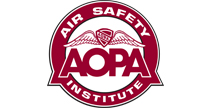Too much of a good thing?
WPR09LA323
 By David Kenny
By David Kenny
The simple act of putting fuel in the tanks seems straightforward, but every year three different kinds of fueling errors lead to accidents. Adding the wrong type of fuel can be immediately catastrophic (piston engine fueled with Jet A) or do long-term damage that causes problems later (running an aircraft on auto gas containing ethanol). Failing to take on enough fuel leads to unpleasant surprises, but sometimes immediate trouble results from taking on too much. The old saying that “you can’t have too much fuel unless you’re on fire” doesn’t apply when operating at high density altitudes.
Fortunately, one simple precaution provides the first line of defense against all three: Pay careful attention to whoever’s fueling the aircraft (even if it’s you). Asking the line crew to tend to the tanks and leaving without making sure it was done exactly as requested saves a few minutes, but also admits risks that could have been eliminated.
On July 1, 2009, a Republic RC-3 Seabee hit power lines after failing to sustain its initial climb from Burley, Idaho. Witnesses said that the airplane used most of the 4,067-foot runway to become airborne, climbed slowly to no more than 100 feet agl, and then began to descend. The impact with the power lines pitched the airplane down, and it hit the ground nose-first, separating the tail from the fuselage. The airplane’s new owner, a student pilot in the left seat, escaped with minor injuries, but his instructor was seriously hurt.
The Seabee is an interesting airplane— high-wing amphibious flying boat with a pusher prop. More than a thousand were built between 1945 and 1947, and several hundred remain airworthy. The owner had just purchased this one in Canandaigua, N.Y., after an “extensive” annual inspection. He and his instructor were in the last day of a three-day ferry flight home to Oregon.
Related Links
Both pilots told investigators that they had stopped in Burley for fuel, requesting 30 gallons before taking the courtesy car to get breakfast. When they returned, they found that the tank had been topped with 68 gallons instead. Clearly, fuel had been needed—the Seabee carries 75 gallons and burns 13.5 per hour, so they had landed with a bare 30-minute reserve. However, with a short leg ahead (142 nm to Caldwell, Idaho) and the airplane already heavy, a full tank raised other concerns. The owner asked about de-fueling, but after some mental calculations the instructor concluded that it wouldn’t be necessary; conditions were identical to those on their previous takeoff, made from a shorter runway at higher altitude.
Both agreed that the airplane was at its maximum gross weight of 3,150 pounds. The Burley airport lies at 4,150 feet msl; the morning of the accident, density altitude was estimated at 5,581 feet. Based on the airplane’s performance tables, the investigator calculated that the “book distance” to clear a 50-foot obstacle was 3,921 feet, almost the full length of the runway—and that would have been for a new airplane flown by an expert, not a 62-year-old craft unfamiliar to its pilots. The power lines were 60 feet above the ground.
For the record, the person who actually pumped the fuel disputed the pilots’ account. In written testimony to the NTSB, the co-owner of the FBO denied that either pilot ever specified 30 gallons, and reported that when asked, they gave detailed instructions on how to tell when the tank was getting full, implying they wanted a top-off. It’s possible that this was all a misunderstanding—that the pilots didn’t realize their request for 30 gallons had been missed and thought they were just satisfying normal curiosity about an unusual airplane. In any case, had they stayed until the fuel was in, they would have been sure of getting the amount they wanted.
Whether the Seabee would have cleared the power lines carrying 228 pounds less fuel is an interesting question. They had taken on fuel before the previous leg, which was only 87 nm, so they seemed to be traveling light, presumably to improve climb performance. This suggests a somewhat casual attitude toward flight planning as well as performance calculations. The AOPA Air Safety Foundation recommends giving yourself at least a 50 percent buffer over POH takeoff distances. In this case, an 8,700-foot runway was available at Joslin Field, just 37 nm further west … but they didn’t have the fuel to get there.